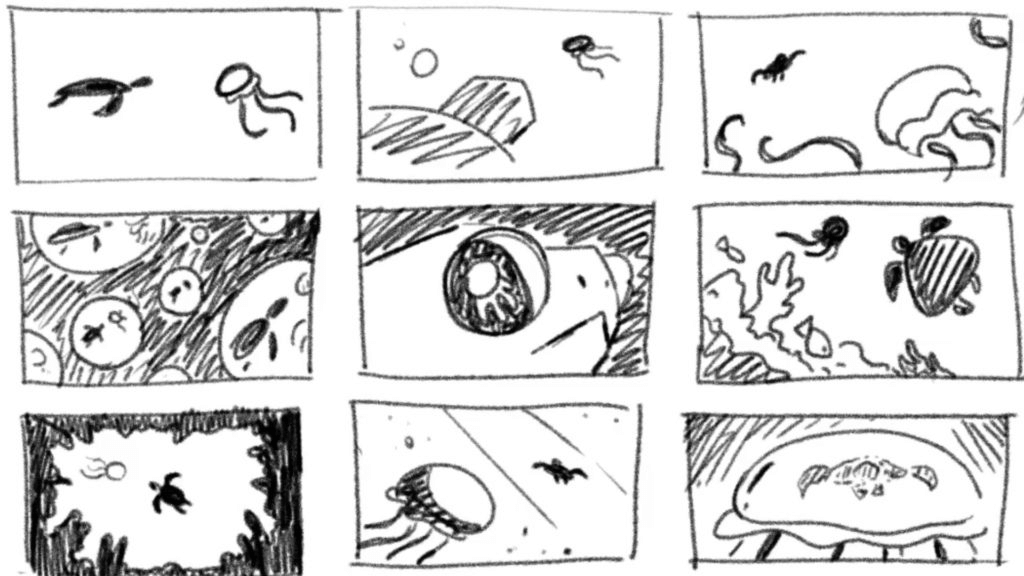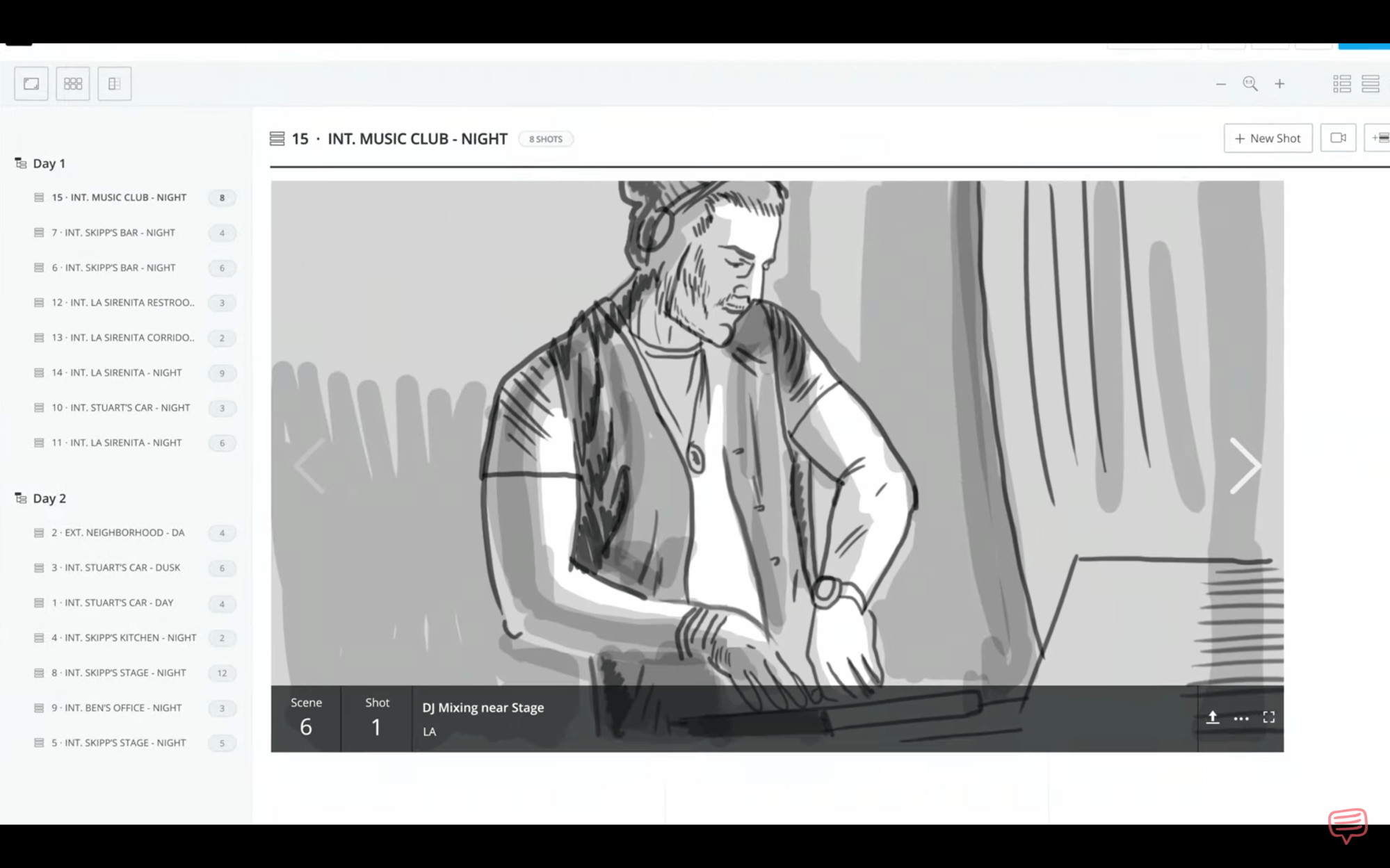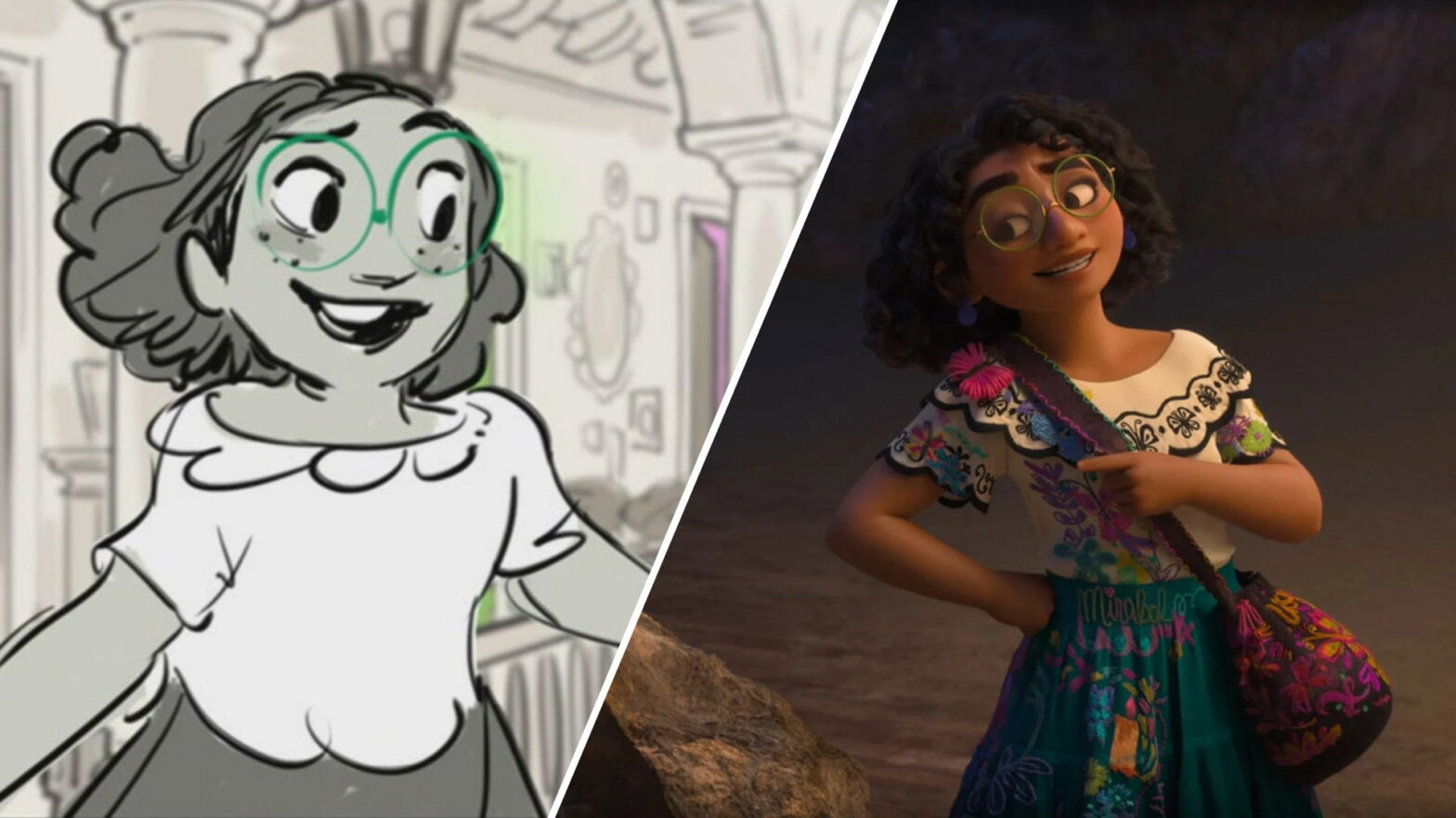Storyboarding is something that can be done in all types of visual mediums, whether it’s a movie, show, or commercial. They make it easy to visualize what you want to see on-screen, which can save you a lot of time with staging, editing, and shooting. And while storyboards aren’t mandatory when making a movie, they can be if that movie is animated. So what is an animation storyboard and what makes it so different from storyboards used for live-action works? We’ll dig into that, along with tips and tricks on how to storyboard an animation.
Storyboard Definition Animation
Animation storyboarding
On the surface, an animation storyboard seems very much like a regular storyboard. And sometimes that can be the case. However, there are key differences up and down the production process of creating and reviewing an animation storyboard.
STORYBOARD DEFINITION ANIMATION
What is an animation storyboard?
An animation storyboard is a way of illustrating, structuring, and organizing a scene in a work of animation. Based on the script and voice acting, these storyboards evolve from sketches to fully-formed pictures, culminating in a final set of images which make up a scene. The idea is to present the most accurate and probable version of a scene. After which, they will be looked over, approved, and then sent out to be animated.
Storyboard animation characteristics include:
- Illustrating entire scenes, moment to moment
- Creating the flow, look, and feel of the final product
- A group effort from artists, directors, and animators
If you want a quick idea of what a storyboard looks like, you can take a look at StudioBinder's storyboarding software in the video below, which shows off how it looks and how it can work for any movie genre and style.
StudioBinder software • Subscribe on YouTube
And if you don’t want to get too animation specific, you can also take a look at our more general articles covering the definition of a storyboard and how to create a storyboard, along with a list of examples.
Storyboard Animation Process
The importance of storyboarding
Storyboarding has its uses in a live-action work — like plotting out an opening action scene — but it’s part of the job in animation. After a script is written and voice work is set, it’s up to the storyboard artists to take that narrative skeleton and flesh it out. You can get a quick idea of how vital storyboarding is to animation in the video below featuring an animation storyboard template.
Storyboard animation • How to storyboard an animation
Storyboard artists are setting the stage for how a final product is going to look, which includes camera angles, environments, characters, and movement. The images do not have to be ultra specific, but they should present some version of what will be seen by the audience when everything is animated.
This is also why understanding the characters, voice inflections, and motivations in the story are important.
As is the case with regular filmmaking, animation is a collaborative process. And the storyboarding process is no exception, as it takes a combination of artists, directors, and revisionists.
Storyboard artist Ethan Becker breaks down this process, along with how you can set up a portfolio, in the animation storyboard example below.
Storyboard for animation • Animation storyboard template
So a storyboard artist is not simply coming up with ideas for how an animated movie will look. They are, in essence, creating the actual look for the movie. Aside from directors looking over what’s been illustrated, it lies on the artists to help create this world, make it believable, eye-catching, and, well, animated.
Related Posts
Animation Storyboard Examples
Tips and Tricks
Now we’re going to dive into some tips and tricks that you can take with you when working on your own storyboard for animation.
Thumbnails and Angles
When storyboarding for animation, it’s a good idea to start small with thumbnails. These are basic and undetailed versions of what you want to do for your finished storyboard. Thumbnails allow you to sketch out your idea, come up with what you want to include, and what it should look like.

Animation storyboard template • Courtesy of Micha Buzan
Thumbnails also let you play around with possible angles. So if you’re introducing a character, you can play around with how they can first appear, (e.g., medium shot vs an extreme close up).
Since what you’re drawing could be final, a thumbnail lets you see it in a basic form before committing to the real thing.
Character Mindsets
When all you have is the script and voice work, it’s up to you to interpret how that would look on-screen. This is why getting into the mindset of the characters matters, as it will let you better figure out why they feel a certain way, how their face might look in a scene, or what their body language is like.
You can get an idea of how this translates into a final product with the video below. Taking a scene/musical number from Frozen, we see the storyboard animation side-by-side with the finished film.
Animation storyboard examples • Storyboard vs final product
Clarity
This may seem a bit vague, but when we say clarity, we mean drawing things in such a way that you know what they are in silhouette. A character’s posture, movement, emotions; these are the sorts of things you should make clear in your illustrations. Whether the character is enjoying dinner or suffering from heartache, it’s up to you to make sure those feelings are as clear as can be.
Clarity in storyboard animation also extends to actions and movements. If a character is going to run away from an enemy, the story boards should make that very clear. If a cannon is firing at a ship, it should be drawn in such a way to indicate movement and the necessary details. Even just a pose, like a character standing triumphant, should be as clear as can be, so that the audience doesn’t have to guess what’s going on in any scene.
The Right Framing
This one might seem a bit obvious, but it’s always important to know what aspect ratio you’re drawing for. Whatever you’re working on is going to be presented in a consistent frame, so you want to make sure you stay within the perimeters of that frame.
This also means having the right amount of space in your frame and composing images just right, so that nothing looks out of place. For example, knowing your ratio and sticking to it lets you know how much space you have to work with, what to include in a frame, and how things in that frame should look.
Film Language
Animation gives you less wiggle room for mistakes, but you can still implement classic and traditional film language in your storyboards. Pans, close ups, mise en scene; these and more can be used and played with in your sketches and illustrations. It’s also just good knowledge to have, since the aim for an animation storyboard for a film is to create those cinematic looks and feelings an audience knows and loves.
Animatics
If you have your animation storyboard ready for review, you can also actually animate it. Known as an animatic, this is when the animation storyboard template that you’ve illustrated is animated with basic movements that give an even better idea of how it will look in full motion.
StudioBinder’s storyboarding for animation software has a feature to let you see your images in order, which is an easy way of creating an animatic without having to even change your software.

Storyboard animation • StudioBinder’s animation storyboard template
While animatics are sometimes just the storyboard images presented in a row, others can be more involved and complex. The video below — courtesy of SpongeBob SquarePants — actually presents these two types of animatics, starting with a more involved computer-generated animatic.
Storyboard animation examples • SpongeBob animatics
Whether an animatic is necessary or not will depend on your project. But if your animation storyboard is complex, or uses motion that cannot be fully showcased in still images, animating the scene or sequence can be very helpful.
Related Posts
UP NEXT
How to Make a Storyboard
No matter the medium, if you’re going to use storyboards, you should know everything that goes into them. Our article on how to make a storyboard covers this and how our storyboard software can make it happen.
Up Next: How to Make a Storyboard →
Showcase your vision with elegant shot lists and storyboards.
Create robust and customizable shot lists. Upload images to make storyboards and slideshows.
